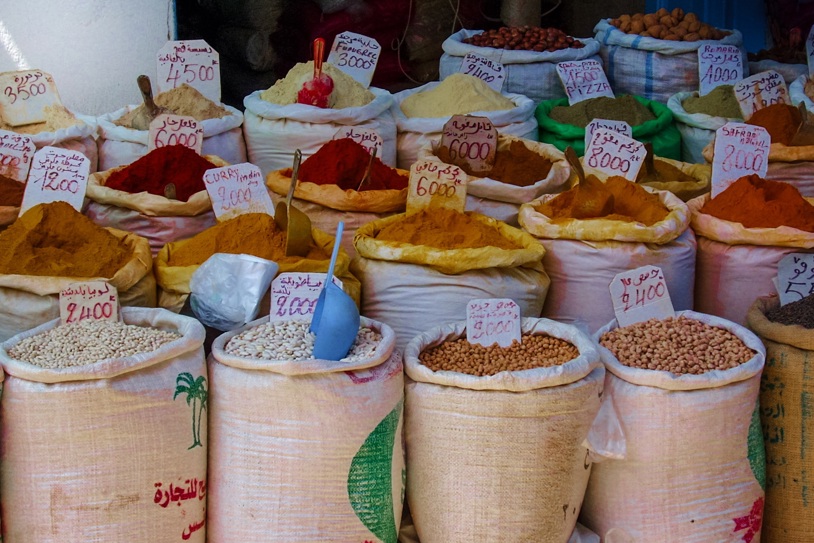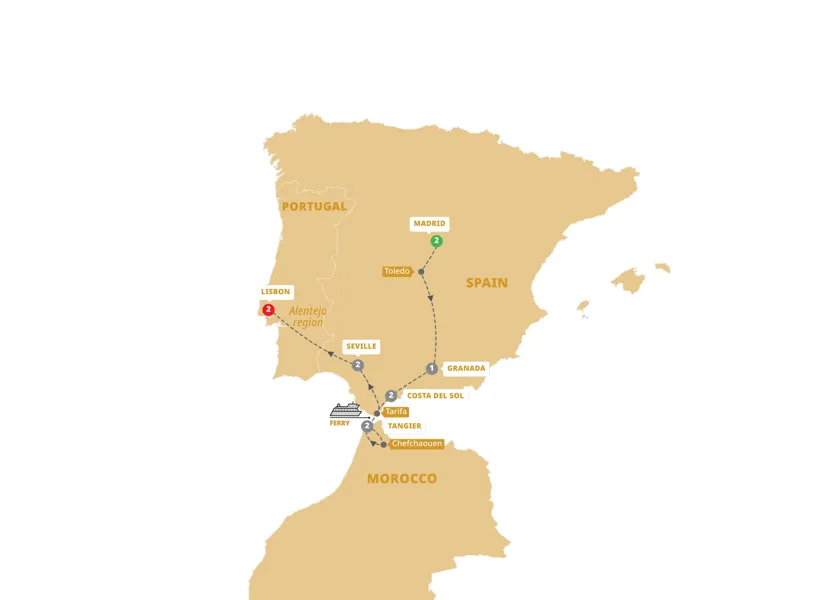Explore Morocco’s imperial cities, the Sahara’s vastness, artisan medinas, and serene coastal Essaouira in this expert-curated travel advice guide for first-time travelers.
Authentic Morocco
Travel Guide
Casablanca, Fès,
Sahara & More
Travel Guide
Casablanca, Fès,
Sahara & More
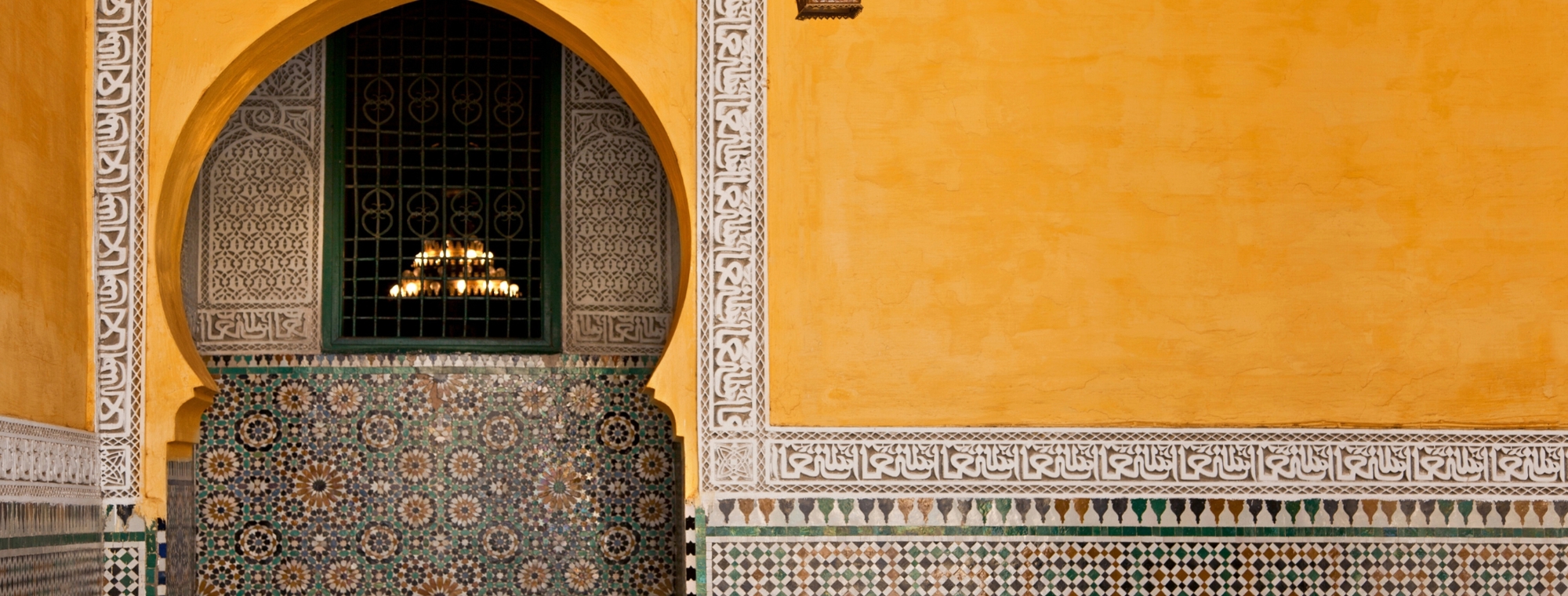
Morocco for Curious Explorers: An Expert’s Journey Through Culture, History, and Timeless Landscapes
Morocco is a country where history and tradition live side by side with vibrant modern life. Its landscapes range from Atlantic shores to the sweeping Sahara, and its cities are filled with architectural treasures, artisan traditions, and living history. For first-time travelers, Morocco offers a captivating introduction to North African culture through experiences that reveal both the country’s grandeur and its intimate, human side. This guide is designed to help you make the most of a journey that blends iconic sights with authentic encounters.
Top Cities to Visit in Morocco
Rabat and Meknès: Imperial Grace
Rabat, Morocco’s capital, is a city of stately gardens, elegant avenues, and fortified walls that tell stories of the nation’s past. Its monuments and public spaces are well-preserved, giving visitors a clear sense of Morocco’s royal heritage.
Meknès, once an imperial capital, greets travelers with monumental gates and expansive squares. The medina here feels less crowded than those in larger cities, allowing for a more relaxed pace while still offering vibrant markets and historic architecture that speak to its importance in Morocco’s history.
Marrakech: A City Alive with Tradition
Marrakech is a city that hums with life from morning to night. The main square and surrounding souks are filled with storytellers, snake charmers, acrobats, and musicians, creating a constant spectacle for visitors. Beyond the lively marketplace, the city offers peaceful gardens and historic palaces that reveal a quieter, more contemplative side. In the medina, the colors, scents, and sounds merge into an unforgettable sensory experience.
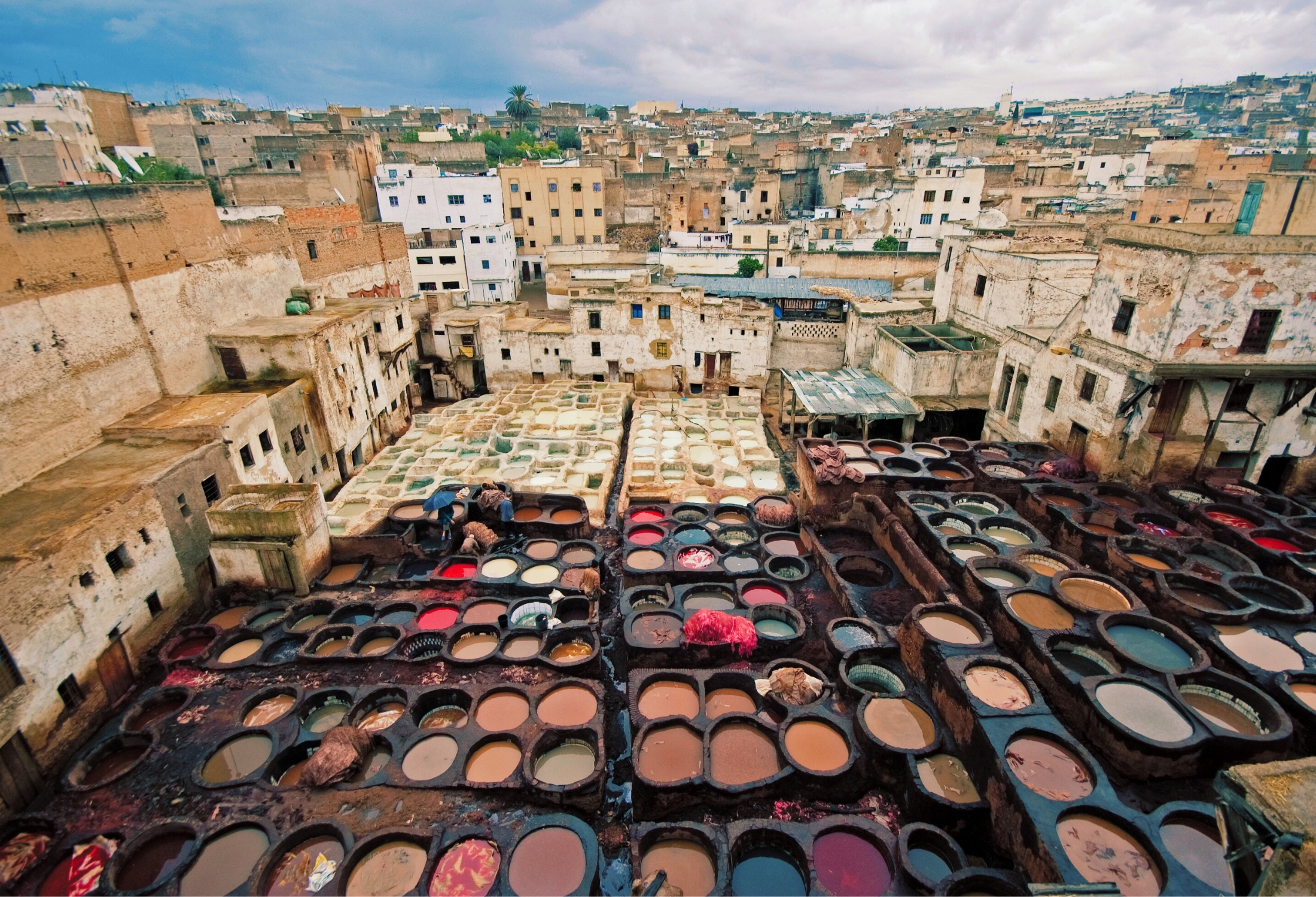
Fès: A Living Artisan Legacy
Fès is one of Morocco’s most culturally rich destinations. The city’s ancient medina is a UNESCO World Heritage Site, a maze of narrow streets where artisans practice trades passed down through generations. You may see leatherworkers tending dye pits, tilemakers shaping intricate mosaics, and metalworkers crafting ornate lanterns.
A palace setting provides the backdrop for sampling Moroccan specialties, from fragrant tagines to exotic fruits. Staying in a traditional riad gives you the chance to appreciate Moroccan architecture at its most intimate, with tranquil courtyards and delicate tilework.
Essaouira: Coastal Calm
Essaouira provides a change of pace from Morocco’s bustling inland cities. Its fortified walls, historic harbor, and whitewashed buildings are complemented by a relaxed coastal atmosphere. The town’s artisan workshops and galleries reflect a strong creative spirit, making it a place where you can explore both Morocco’s maritime history and its thriving arts scene. The Atlantic breeze and sea views provide the perfect setting to reflect on your journey.
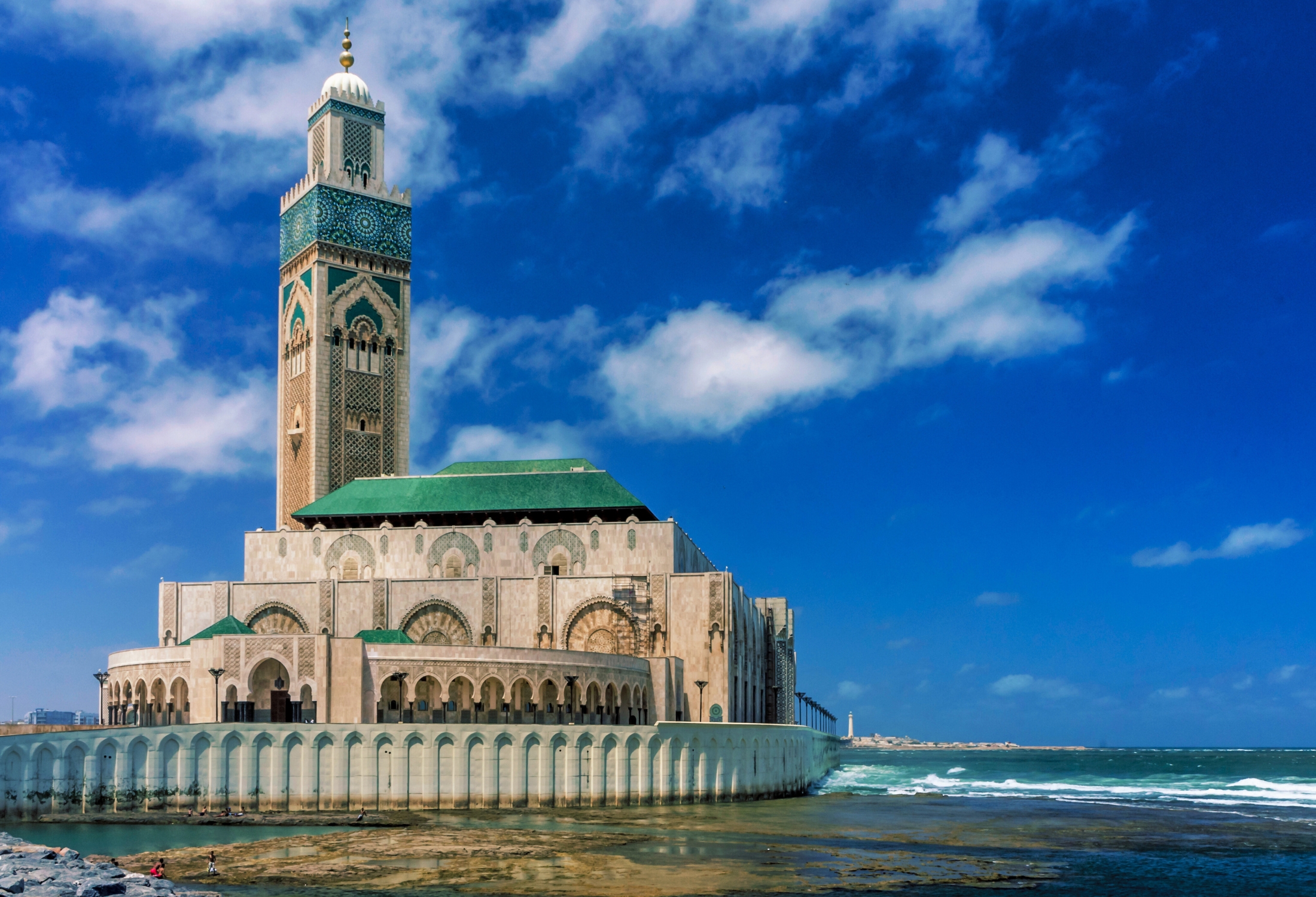
Casablanca’s Architectural Elegance
Casablanca is Morocco’s largest city and a place where you immediately sense the blend of tradition and modernity. Casablanca also has wide boulevards, palm-lined streets, and a cosmopolitan atmosphere that provides a smooth introduction before venturing into the country’s older imperial cities.
Here you can visit the country’s largest mosque, the Hassan II Mosque, a masterpiece of intricate craftsmanship and grand design that reflects both devotion and artistry. The mosque’s soaring minaret and detailed tilework make it one of the most photographed landmarks in Morocco. (Keep reading to learn more about the Hassan II Mosque below!)
Iconic Sights of Morocco to See
The Hassan II Mosque
The Hassan II Mosque in Casablanca is Morocco’s largest mosque and one of the most impressive in the world. Completed in 1993, it can accommodate over 100,000 worshippers, with about 25,000 inside and 80,000 in the expansive courtyard. Designed by French architect Michel Pinseau and built by thousands of Moroccan artisans, the mosque blends traditional Moroccan craftsmanship with modern engineering. Its 210-meter minaret is the tallest in the world and is topped with a laser that points toward Mecca.
The mosque is perched on a promontory along the Atlantic Ocean, with part of its foundation extending over the water, reflecting a Quranic verse that speaks of God’s throne built upon the sea. Inside, visitors find intricate zellige tilework, carved plaster, hand-painted cedar ceilings, marble floors, and a retractable roof in the prayer hall that opens to the sky.
The Hassan II Mosque is one of the few in Morocco open to non-Muslim visitors, making it a rare opportunity to explore Islamic architecture and religious artistry firsthand. Guided tours allow travelers to walk through the immense prayer hall, admire the masterful details, and take in the sweeping ocean views from the mosque’s terraces. At sunset, the light reflects off the marble and turquoise tiles, casting a warm glow over the entire complex and creating a truly unforgettable experience.
Erfoud and the Sahara at Merzouga
Traveling to Erfoud marks the transition from fertile valleys to the arid beauty of the desert. From here, the landscape becomes more dramatic, leading to the golden dunes of Merzouga. Standing at the edge of the Sahara, you are met with an endless expanse of sand that shifts in color as the sun moves across the sky. The sense of scale and silence in the desert offers a rare chance for deep reflection.
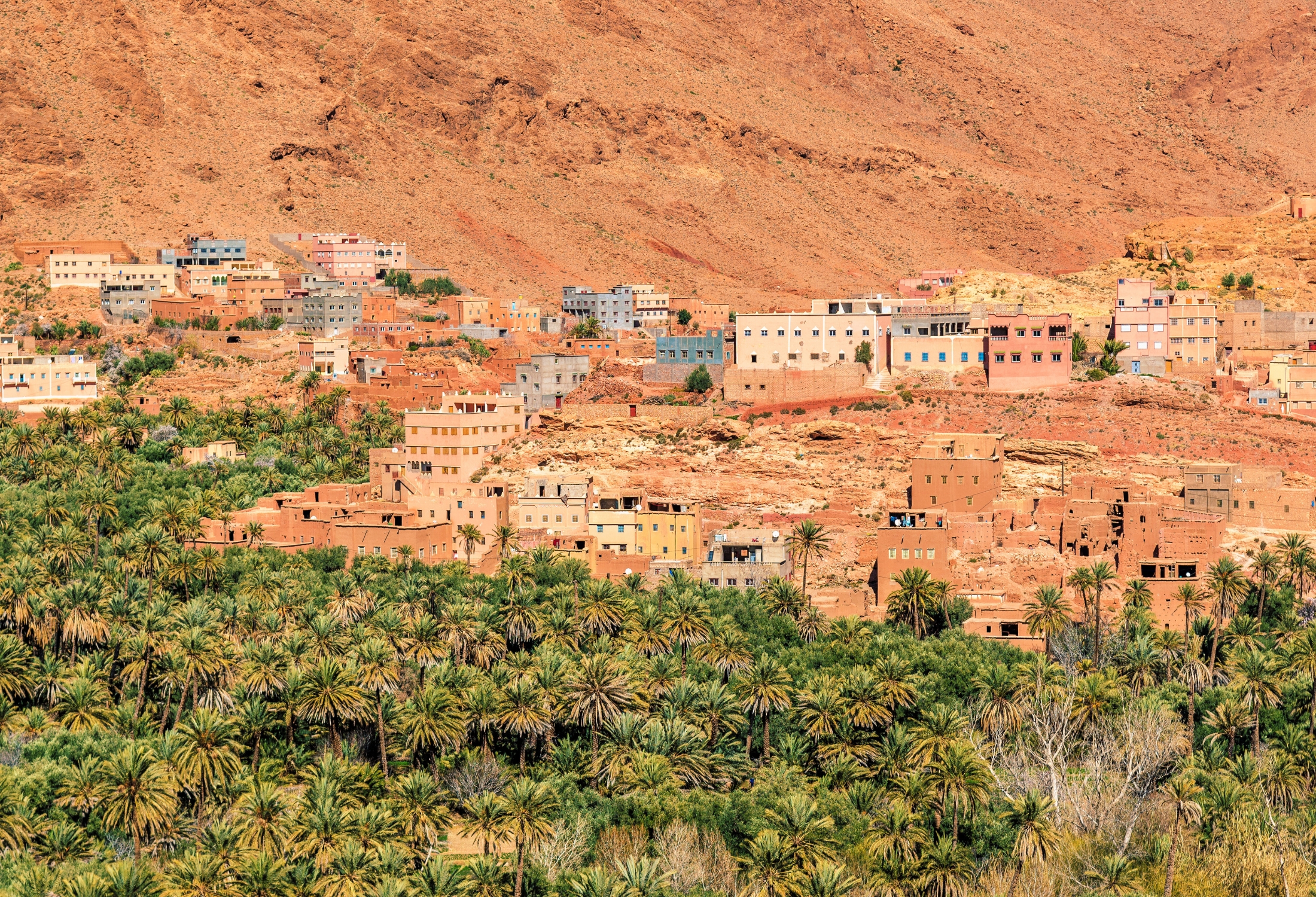
Tinghir Oasis and the Dades Valley
Tinghir is a true oasis, where green palm groves and cultivated fields contrast with rugged red cliffs. Continuing into the Dades Valley, the scenery changes into winding canyons and rocky outcrops shaped by centuries of wind and water. This is one of Morocco’s most scenic drives, and every turn reveals new perspectives on the region’s natural beauty.
A Fortress at the Edge of Time
On the edge of the desert lies a UNESCO-listed kasbah, built from sun-baked clay that has withstood centuries of desert winds. Its towers and walls tell the story of Morocco’s position on ancient caravan routes, when traders and travelers passed through carrying goods, ideas, and cultures from across Africa and beyond. The kasbah remains a symbol of resilience and the enduring traditions of Moroccan architecture.
Memorable Experiences Traveling in Morocco
Moments with Nomads
In the Dades region, meeting with nomadic families over a cup of wild-herb tea offers a connection that goes beyond sightseeing. These encounters are moments of genuine cultural exchange, where you can learn about a way of life shaped entirely by the desert environment. The hospitality and quiet dignity of the nomads leave a lasting impression.
Artisan Traditions in Fès
Artisans in Fès work in small shops and open courtyards, shaping the city’s identity one handcrafted piece at a time. Whether it is the geometric precision of zellige tilework, the supple texture of hand-dyed leather, or the delicate patterns of brass and copper goods, each creation carries a sense of history and pride in craftsmanship. Watching these masters at work adds depth to your appreciation of Morocco’s living traditions.
Frequently Asked Questions About Morocco Travel & Tours
Spring (March to May) and autumn (September to November) offer the most comfortable weather for exploring Morocco’s cities, oases, and desert landscapes. These seasons bring warm days, cooler evenings, and clear skies, making it easier to enjoy guided walks, cultural visits, and open-air markets.
Summer can be very hot inland, especially in the Sahara, while winter is mild but cooler at night, particularly in desert and mountain regions.
Comfortable, modest clothing is recommended, especially when visiting religious sites or rural areas. Lightweight fabrics are best for warmer months, while a light jacket or sweater is useful for cooler evenings, especially in the desert and during spring or autumn. Comfortable walking shoes are essential for navigating medinas and historic sites.
No, you do not need to speak Arabic or French to enjoy a guided tour in Morocco. Tour Directors and local guides on premium escorted trips speak English and help facilitate interactions with residents. Learn a few basic phrases in Arabic for travelers with our easy guide.
Yes. Morocco is considered a safe destination for travelers on guided tours. Escorted travel provides an added layer of security, as you are accompanied by experienced guides and drivers who know the areas well. As in any destination, it is wise to keep valuables secure and be aware of your surroundings in crowded places.
Guided tours of Morocco include a mix of historic, cultural, and scenic highlights. You might visit imperial capitals such as Rabat and Meknès, walk through the artisan quarters of Fès, explore a UNESCO-listed kasbah, sip wild-herb tea with nomadic hosts, and take in the sights and sounds of Marrakech’s vibrant souks.
Many itineraries also include time in coastal Essaouira and the unforgettable dunes of the Sahara in Merzouga.
Yes, many itineraries travel into the Sahara. A highlight is visiting the desert gateway town of Erfoud and continuing to Merzouga to see the sweeping dunes. The experience is often described as a trip highlight, offering stunning views and a sense of vast, open space that is unique to the desert environment.
Yes, several of our guided itineraries are designed to balance inland exploration with time on the Atlantic coast. You might begin in Casablanca, travel through the imperial cities, journey into the desert, and conclude with a relaxing stay in Essaouira, where the sea breeze and artistic atmosphere offer a refreshing contrast.





